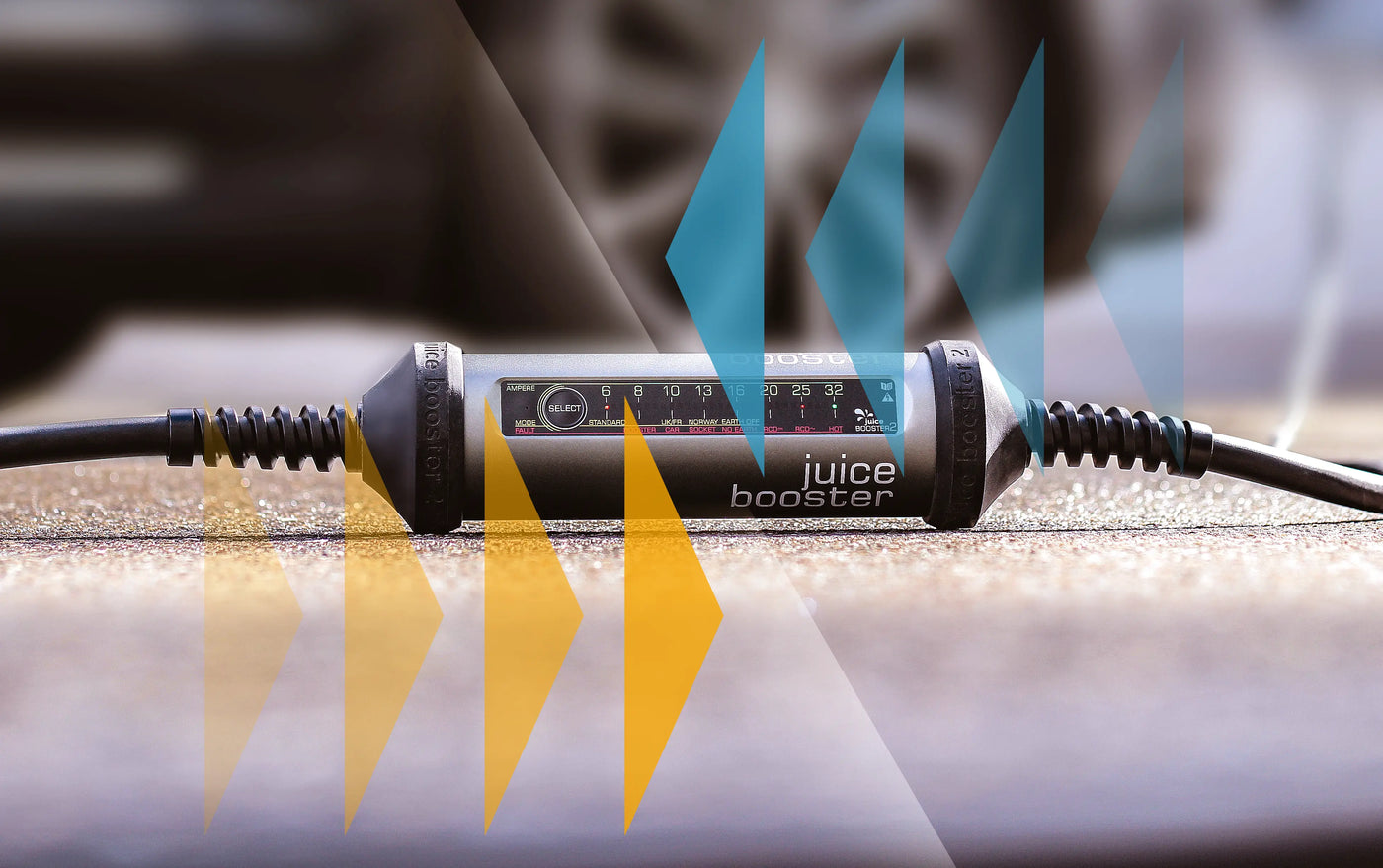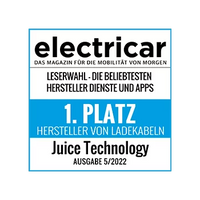What is already possible today and what is not yet possible
With the right technology, electric cars become mobile energy storage devices that can actively contribute to grid stability. The magic word is "bidirectional charging": a technology that not only allows electricity to be charged from the grid into the car, but also fed back into the grid when needed. What is already possible today? Where does the technology stand? What are the prospects for this?
In everyday life, we are familiar with the classic charging scenario: An electric car is plugged into a wallbox and supplied with electricity. Bidirectional charging expands this principle. In the future, the vehicle, for example, when parked in a company parking lot or a home garage, will also feed electricity back into the building or the public grid. Other scenarios include use on the road, in a forest cabin or at an open-air party, to power devices, or to provide breakdown assistance for other vehicles. Different concepts are distinguished:
- Vehicle-to-Grid (V2G): The vehicle feeds energy back into the power grid, thus supporting grid stability.
- Vehicle-to-Home (V2H): The electric car serves as a backup power source to supply the home with energy during power outages.
- Vehicle-to-Load (V2L): The energy reserves of an electric vehicle are used to power electrical devices and tools – for example at campsites, construction sites or outdoor events.
- Vehicle-to-Vehicle (V2V): One vehicle transfers its energy to another in emergencies.
Strictly speaking, only V2G is considered bidirectional charging in the true sense. From an energy economics perspective, it is the concept with the greatest systemic benefit.
How does this work technically?
The technical implementation, especially for V2G, is challenging and requires the interaction of various components: 1. A vehicle prepared for bidirectional charging. 2. A suitable bidirectional charging station (DC or, in the future, AC). 3. An energy supplier that allows backfeeding. The vehicle, charging station, and grid operator must be compatible and capable of communication.
There are two types of bidirectional charging:
A. Bidirectional DC charging: Here, the charging station converts the alternating current from the grid into direct current for storage in the battery – and back into alternating current for feeding back into the grid. The intelligence therefore lies largely in the charging station. The advantage lies in the relatively low complexity on the vehicle side: Only a software adjustment is required to be able to not only receive but also deliver power. However, DC charging stations are comparatively expensive and more complex to install.

B. Bidirectional AC charging (future): Here, the vehicle must not only convert the alternating current supplied by the charging station into direct current for storage in the battery, as is currently the case, but also back to grid-compliant alternating current. This second step in particular requires a powerful inverter in the vehicle. This solution promises a more cost-effective charging infrastructure, as the charging station primarily serves as a transmitter of the grid requirements and as a switch. However, it requires a more complex vehicle architecture, which is why this technology has rarely been used in production vehicles to date. However, some OEMs are already driving development – one example is the new Renault R5.

Standards and communication
Standards are needed to ensure smooth communication between the vehicle, charging station, and grid. It is crucial that the power fed back into the grid complies with standards, especially with regard to grid quality: The power must have the correct voltage, frequency, and a clean sine wave – no interference, no frequency deviations. ISO 15118-20, a protocol that regulates data transmission between the vehicle and charging station, plays an important role here. In addition, there are technical specifications from the IEC 61851 series, which describe the basic requirements for charging electric vehicles. The IEC 61851-1 standard (under development) describes what must be considered for bidirectional AC charging; the IEC 61851-23 standard covers bidirectional DC charging.
Which cars and wallboxes can charge bidirectionally?
Initial application examples already exist. For example, the V2X pilot project of the car-sharing provider Mobility in Switzerland, which combined 50 Honda e-vehicles with bidirectional DC charging stations. Volkswagen (ID.3, ID.4, ID.5) and Kia (EV6) are also increasingly preparing their vehicles for this technology. With the R5, Renault is the first to launch a production vehicle with bidirectional AC charging.
Different approaches are emerging in the area of charging infrastructure: While bidirectional DC systems – including those with integrated home storage – are already available in some cases, bidirectional AC charging is still in the development phase. However, the first market-ready solutions are close to launch. The cost of bidirectional DC charging stations currently ranges from €6,000 to €13,000. Bidirectional AC stations will be significantly cheaper, expected to cost around €2,000 at market launch – and the price will continue to fall. The increasing realization of bidirectional AC charging was already evident a year ago at Power2Drive, where Juice presented the first prototype of a bidirectional AC charging station , thus providing a glimpse into the potential of this technology.
Why is bidirectional charging so relevant?
With the growing number of decentralized energy sources such as photovoltaic systems, the need for flexible electricity storage is also increasing. Electric vehicles could take on this role – especially if they remain unused for many hours of the day anyway. A networked neighborhood with bidirectionally charging electric cars could function as a decentralized electricity storage network – balancing grid fluctuations, reducing peak loads, and even helping to reduce the need for expensive grid infrastructure expansion. This also opens up economic opportunities: Those who charge electricity at low-cost times and sell it at high-cost times can benefit from price fluctuations in the electricity market.
Bidirectional fleets in practice
This offers enormous potential for operators of car-sharing fleets, corporate fleets, or housing cooperatives. Electric cars with long idle times (e.g., at night or during working hours) could act as virtual power plants. This is particularly attractive if vehicles are charged with solar power during the day and energy is fed back into the grid in the evening.
Challenges
As promising as the technology is, its limitations are still clearly evident. Bidirectional AC charging, in particular, is still in its infancy from a technical perspective: Only a few vehicles are currently equipped with the necessary power electronics, and solutions suitable for series production are rare. Regulatory hurdles also exist – for example, in Switzerland, where the lack of electricity market liberalization has so far prevented economically viable feed-in. Furthermore, many relevant standards are still in the draft stage, and practical business models for feed-in are barely established.
Outlook
Bidirectional charging has the potential to fundamentally change the role of the car—from a silent power consumer to an active element in a smart energy system. The long-term potential clearly lies with bidirectional AC charging. The technology is simple in theory, the costs are low, and the grid could benefit massively.
Starting around 2027, bidirectional charging will gradually be commercialized in Switzerland. However, there is still a long way to go before it is ready for mass adoption, which will require standardization, falling hardware costs, and the appropriate political framework. In Germany and France, where electricity markets are already liberalized, this is already possible in principle.
Bidirectional charging is a key component of the energy transition. It's worth keeping an eye on developments – for vehicle manufacturers, grid operators, energy suppliers, fleet operators, and, last but not least, for anyone who owns or plans to buy an electric car.
Read more here
How Juice is developing the JUICE BOOSTER into a lightweight, mobile BiDi solution: https://juice.world/blogs/news-hub/bidirectional-booster-on-the-power2drive













